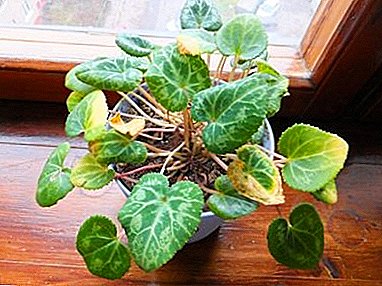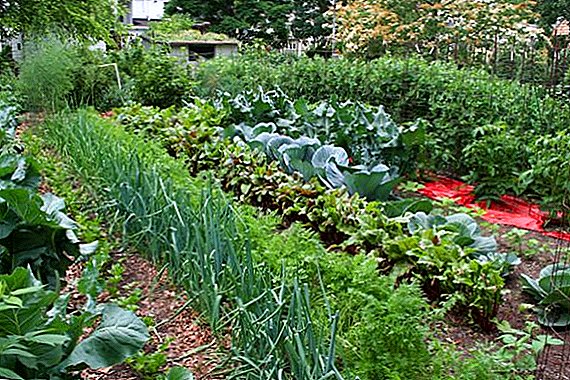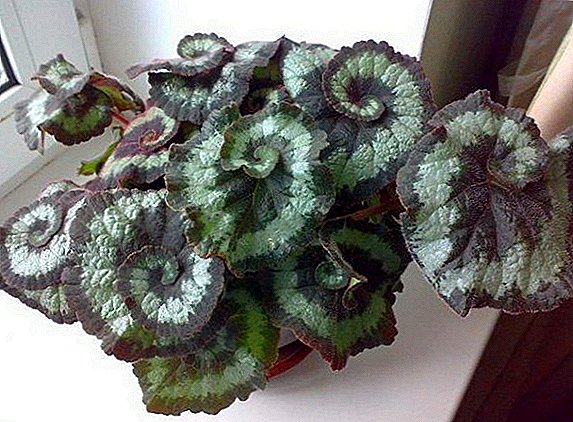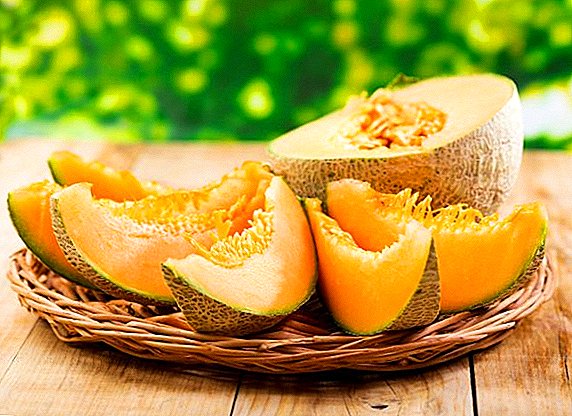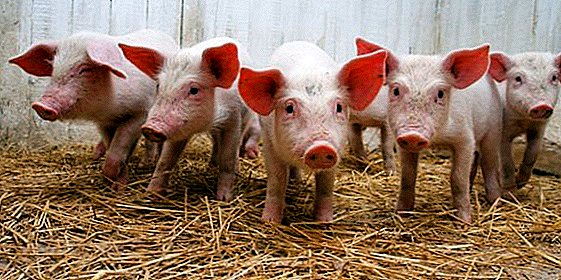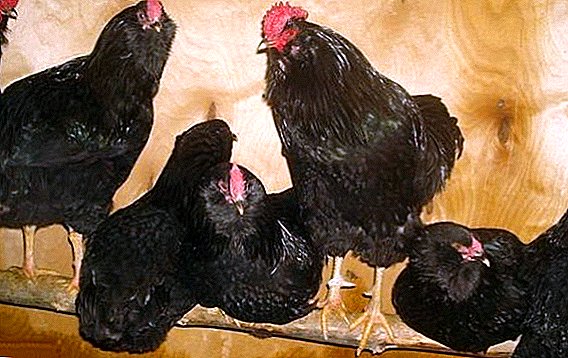 The homeland of the black hens of the galan meat breed is Russia. Chickens are distinguished by black color and long neck feathers resembling a mane. Feathers also form fluffy tanks on the hen's beard - for these features the breed is also called black bearded Russian. Chickens have good exterior and productivity.
The homeland of the black hens of the galan meat breed is Russia. Chickens are distinguished by black color and long neck feathers resembling a mane. Feathers also form fluffy tanks on the hen's beard - for these features the breed is also called black bearded Russian. Chickens have good exterior and productivity.
Breed breeding
As with most breeds, accurate data on the origin and initial selection have not been preserved. But based on the result, it can be assumed that the goal was decorative qualities (color, beard) with the preservation of meat productivity.  The basis of the new breed were taken ordinary yard layers. According to one of the versions, hens of French breed are taken for black plumage Crevker. The plumage of both breeds is absolutely identical. But Krevker distinguishes the crest on the head. According to another version, the hen of Orlovskaya black was used to obtain such plumage. The proud posture, derived from the ancestors of the fighting breeds, has long cervical feathers, excellent vitality and meat productivity.
The basis of the new breed were taken ordinary yard layers. According to one of the versions, hens of French breed are taken for black plumage Crevker. The plumage of both breeds is absolutely identical. But Krevker distinguishes the crest on the head. According to another version, the hen of Orlovskaya black was used to obtain such plumage. The proud posture, derived from the ancestors of the fighting breeds, has long cervical feathers, excellent vitality and meat productivity.
Also, researchers note that the breeding hen was involved in the breeding process. viandotrelated to universal meat and egg type.
Find out more about Crevker and Wyandot.
The result of breeding is a breed with pronounced decorative features, good weight (3-4 kg weight of the rooster) and quite good egg production rates (about 200 eggs per year).
Description and Features
The main breed signs galans reflected in different breed names:
- Russian stately - the modern American name;
- Black Russian bearded - the name common in Europe;
- Wood grouse is a popular name.
Another popular name for the breed is the aristocratic chickens, probably derived from the habitat - in the manor’s farmsteads.  Breed signs:
Breed signs:
- the head is decorated with tanks;
- long elongated neck;
- magnificent cervical plumage;
- black color with green tint;
- slender vertical torso of the cockerels.
Read also about the Russian breeds of chickens: Russian crested, Zagorsk salmon, Kuchinskaya anniversary, Leningrad golden-gray, Moscow black and white, Yurlovskaya vociferous.
Appearance and physique
The figure of a rooster is stretched vertically upwards. Legs are tall and strong. The neck is long with a bend. Magnificent plumage of a neck and a nape. Middle-sized head with pink-colored comb, wide brow brows, short yellow beak. The tail is lush, medium length. Legs powerful, with strong legs. Eyes reddish-amber color.
Chickens squat powerful straight torso. The neck is average, dense. Ear lobes are small, red. The head is decorated with a small rosy-shaped comb, lush tanks, long neck feathers. Small wings fit snugly to the body. 
Character
Another popular interpretation of the breed's name - gallant - reflects the calm, balanced nature of chickens. Galans strolling along the farmstead move sedately, cockerels gallantly call the chickens to the stern and politely let them forward. Chickens are a bit slow and do not show excessive activity. Birds get along well with other inhabitants of the house.
Galans feel equally well with a closed-range and in free conditions.
Did you know? The egg production of laying hens depends on how loudly the rooster sings. Therefore, on the poultry farms establish the dynamics, broadcasting the singing of a rooster.
Hatching instinct
The nest instinct of galans is well developed, therefore the optimal way of breeding them is egg hatching. However, it is necessary to take into account the fact that approximately every fifth hen is weakened by this instinct. For breeding should select the most caring Klush.
Performance Indicators
The breed belongs to the universal type of hens of meat and egg productivity with pronounced decorative qualities. Such breeds do not set records for weight or egg production, but they nevertheless have quite good indicators.  The weight of an adult cockerel is 3-4 kg. Chicken weight - 3-3.5 kg. The carcasses are large, fleshy, with a low fat content. The taste of meat is excellent. Meat has a high nutritional value.
The weight of an adult cockerel is 3-4 kg. Chicken weight - 3-3.5 kg. The carcasses are large, fleshy, with a low fat content. The taste of meat is excellent. Meat has a high nutritional value.
Chickens of gudan, forverk, lakenfelder, barnevelder, legbar and brekel breeds have decorative appearance and good indicators of meat and egg productivity.
Growth and weight gain
Before reaching maturity (5 months), Galans actively gain weight. Further, the weight of males and hens remains stable and may fluctuate slightly due to seasonal changes: the molting period, the preparation of the body for the winter, the intensive protein diet and other reasons. Starting from the second half of life, the “extra” males can be slaughtered for meat, and the replacement of layers is planned for the fourth year, when egg production begins to decline.
When they start to be born and what egg production per year
Chickens begin to trot in 4-5 months. For a year, a hen can carry about 200 eggs. Eggs are large, identical in size, weighing up to 70 g. The shell of eggs is of a delicate cream color.
Important! With insufficient nutrition, egg production drops sharply to 100 pieces per year.
Adult chicken has a stable productivity for 3-4 years.
What to feed
Galans - the breed is very unpretentious in content and not demanding on the quality of the diet. In addition, free-walking chickens provide themselves well with additions to the basic diet on their own, eating worms, insects, and plants.  But in the winterwhen this is not possible, it is necessary to ensure that the birds receive enough food
But in the winterwhen this is not possible, it is necessary to ensure that the birds receive enough food
- the nutritional rate for 1 layer per day is 120-130 g;
- caloric intake - 300 kcal;
- drinking rate - 300 g
Main power circuit - three times a day: grain in the morning and evening, in the afternoon - mash and green fodder.
The grain part of the feed consists of:
- wheat;
- corn;
- barley;
- millet.
AT warm period years, chickens need a variety of herbs and any seasonal vegetables and fruits: carrots, fodder beets, potatoes, zucchini, pumpkin, watermelons, apples, etc. In winter green fodder replaces germinated grain.  In the diet should be:
In the diet should be:
- a piece of chalk;
- shellfish;
- meat and bone meal;
- bran;
- cake
Important! It should be borne in mind that many types of oil cake contain a toxic substance - gossypol. Especially a lot of it in cotton cake. Therefore, it is necessary to approach this additive with caution.
Additionally, the diet includes mash, which is prepared on whey to provide the hens with proteins and the necessary amino acids.
Chickens
Feeding chickens requires careful compliance with all nutritional requirements.
The diet of chickens at 1-2 weeks of life:
- finely chopped boiled eggs;
- boiled millet and part of ordinary millet;
- mixed feed "Start" finely ground;
- cottage cheese, sour milk;
- vegetables: boiled carrots, pumpkin.
 On 3-4 week finely chopped cereal, beets, greens are added to the ration. Instead of eggs, give cottage cheese, add chalk.
On 3-4 week finely chopped cereal, beets, greens are added to the ration. Instead of eggs, give cottage cheese, add chalk.
WITH 5th week The feeds are fed to the chickens instead of the start feed.
It is necessary to feed newborn chickens at least 8 times a day with an interval of about 2 hours between feedings. Gradually, within 2 months, the distance between feedings is increased and increased by 3 feedings per day, as in adult chickens.
Chicken feeding schedule:
- 1 week - 8 times a day;
- 3 week - 6 times;
- Week 5 - 4 times;
- Week 7 - 3 times.
The feed rate for 1 chicken in the first week of life is 5-10 g of feed per day. The amount of power increase gradually.
In the diet of young stock must be:
- cereals - 20 g;
- serum - 15 g;
- curd - 3 g;
- meat or bone meal or fish meal - 3 g;
- cake - 1 g;
- greens - 15 g;
- root vegetables - 10 g;
- lasting products - 1 year
 Chickens can be given industrial feed or self-made feed.
Chickens can be given industrial feed or self-made feed.
Important! The food apparatus of chickens is designed in such a way that small stones are needed for grinding the dietary fiber, which the chicken swallows along with the food. Pebbles perform in her stomach the same role as the teeth in humans. If there are not enough pebbles on the walk, put small gravel or pebbles in a separate feeder in the house.
Adult chickens
The diet of adult chickens is no different from the diet of productive young. The exception is the period of preparation of chickens for egg-laying. At this time, chickens should receive elevated calcium along with eggshell, shell, chalk, cottage cheese or whey. Calcium, like other elements, is actively consumed by the body in the formation of the reproductive apparatus. After normalization of the egg-laying process, the chickens will need a normal ration of layers.
Approximate ration (in grams):
- grain feed in the composition: corn - 40, wheat - 20, barley - 30, oats - 30.
- vegetables - 100;
- mash - 30-40.
Additional additives: meat and bone meal, chalk, salt, yeast, bran.
Content Features
Galana unpretentious and not demanding conditions of detention.  The main features of the breed content:
The main features of the breed content:
- the presence of free or fenced walking will provide the bird with useful additives to the basic diet;
- hens do not need indoor walking and high fences, since they practically do not fly;
- Galanas are cold-resistant breeds and do not need a heated poultry house - it is enough that it is insulated and does not have drafts;
- the litter in the chicken coop (hay, straw) must be dry in order to prevent the development of diseases.
In the chicken coop with walking
Requirements for the coop:
- warming;
- lack of drafts;
- good lighting;
- dry litter;
- low perches with a ladder to climb to roost;
- available should be nests for layers, drinkers, feeders.
Familiarize yourself with tips on how to make and build a chicken coop on your own: how to build a perch, a nest, an automatic feeder.
Lighting is a necessary element of the egg-laying, since chickens rush only during the daytime. For winter time in the coop should be artificial lighting in order to increase the length of daylight hours.  The air temperature in the chicken coop in winter should not be below 14 ° C. In the cold season, most breeds, including galans, reduce egg production. To keep her productive, hens should not be cold in the room. Standard humidity requirements - 65-70%. In winter, the air humidity is reduced using the chicken house ventilation system.
The air temperature in the chicken coop in winter should not be below 14 ° C. In the cold season, most breeds, including galans, reduce egg production. To keep her productive, hens should not be cold in the room. Standard humidity requirements - 65-70%. In winter, the air humidity is reduced using the chicken house ventilation system.
Natural ventilation is desirable. The simplest ventilation - exhaust, consisting of two pipes. The pipes are equipped with valves that close at a time when there is no need for airing.
There are no requirements for galans walking, as these birds do not fly and do not need fences. But on the grass it is desirable to have grass and small gravel. Gravel will complement the ration of laying hens, as chickens need small stones to digest food.
Did you know? The total number of chickens in the world is about 19 billion, which is two and a half times more than people.
Is it possible to breed in cages
Since galans are owners of decorative characteristics, it is undesirable to plant them in cages. In addition, the lack of walking limits the hen in the possibility of supplementing the diet with essential trace elements and increases the requirements for the quality of nutrition and organization of poultry.  Cellular content is convenient for large industrial farms, as it allows you to optimize bird care, reject unprofitable layers in time, collect eggs in time and distribute feed.
Cellular content is convenient for large industrial farms, as it allows you to optimize bird care, reject unprofitable layers in time, collect eggs in time and distribute feed.
Advantages and disadvantages of the breed
Advantages of galans:
- adapted to life in cold climates;
- dense plumage allows to endure strong frosts well;
- birds are peaceful and easily get along with other inhabitants of the farm;
- undemanding to the conditions of detention and nutrition;
- have a stable and high egg production for 3-4 years;
- eggs are large, with excellent taste;
- good weight;
- fast earliness of the breed;
- high taste of meat;
- excellent decorative properties.
Breed deficiencies:
- The chicks are slowly fledging, so they should be removed in the spring so that they can prepare for the cold weather;
- sometimes reduced instinct nasizhivaniya have Klush;
- in some cockerels fighting qualities are very developed.
Video: black bearded chickens
Poultry farmers reviews about the breed Russian black bearded


Galans will take root well in any household, as they are not only beautiful, but also highly productive and undemanding to the conditions. These viable and strong chickens will decorate the yard, which can bring additional income to the owner. And although over time this breed has become rare, it is able to compete with the latest achievements of selection.


